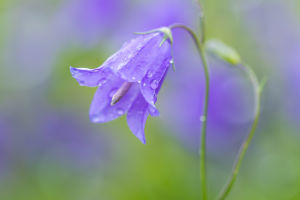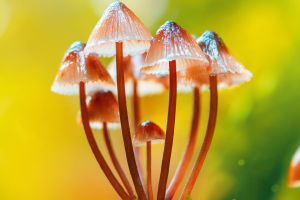Moth orchids, or Phalaenopsis orchids, are among the most popular and widely cultivated orchids due to their stunning, long-lasting flowers and relatively easy care.
To ensure these exotic plants thrive, it's essential to replicate their natural growing environment as closely as possible.
Here’s a comprehensive guide to creating the ideal environment for your moth orchids to flourish.
1. Light Conditions
Moth orchids prefer bright, indirect light. In their native habitats, they grow under the canopy of trees where they receive filtered sunlight.
To mimic these conditions, place your moth orchids in a spot where they can receive ample natural light but are shielded from direct sunlight, which can scorch their leaves.
Optimal Light: Aim for 1,000 to 2,000 foot-candles of light. This is equivalent to bright, filtered light through a sheer curtain. If natural light is insufficient, you can use fluorescent or LED grow lights designed for orchids.
Position the lights about 12 to 18 inches from the plant.
Signs of Inadequate Light: If your orchid’s leaves become dark green, it may be an indication that the plant is not receiving enough light. Conversely, yellowing leaves and sunburn spots may signal too much direct light.
2. Temperature Requirements
Moth orchids thrive in a temperature range that mimics their native tropical climate. They prefer a consistent temperature and can tolerate a slight range, but sudden temperature fluctuations can stress the plant.
Daytime Temperature: Maintain a temperature of 75°F to 85°F (24°C to 29°C) during the day. This range supports optimal growth and blooming.
Nighttime Temperature: At night, moth orchids prefer cooler temperatures between 60°F to 70°F (16°C to 21°C). The temperature drop at night helps trigger flowering and maintains plant health.
Avoid Extreme Temperatures: Keep orchids away from drafts, air conditioning vents, or heating sources, as these can cause temperature fluctuations that stress the plant.
3. Humidity Levels
Humidity is a crucial factor for the health of moth orchids, as they are accustomed to high humidity levels in their natural habitats.
Ideal Humidity: Aim for a relative humidity level of 50% to 70%. In dry indoor environments, especially during winter, you might need to increase humidity.
Methods to Increase Humidity:
Humidifiers: Use a room humidifier to maintain optimal humidity levels.
Pebble Tray: Place the orchid pot on a tray filled with water and pebbles. The water evaporates, creating a microenvironment with higher humidity around the plant.
Misting: Lightly mist the orchid’s leaves with water, but avoid wetting the flowers or the center of the plant to prevent rot.
4. Watering Needs
Proper watering is essential for moth orchids, as they are sensitive to both overwatering and underwatering.
Watering Frequency: Water the orchid when the potting mix feels dry to the touch. This typically translates to watering every 7 to 10 days, but it may vary depending on environmental conditions and the potting medium used.
Water Quality: Use room-temperature, distilled water or rainwater. Tap water with high levels of chlorine or fluoride can damage the plant.
Avoid Overwatering: Ensure the pot has good drainage to prevent waterlogging. Orchid roots need to dry out between waterings to avoid root rot.
5. Potting Medium
Moth orchids require a well-draining potting mix that provides good aeration to their roots.
Potting Mix: Use a commercial orchid mix that typically contains ingredients such as bark, sphagnum moss, and perlite. This mix promotes drainage and airflow, which is vital for the health of the roots.
Repotting: Repot your orchid every 1 to 2 years or when the potting medium breaks down. Choose a pot that is slightly larger than the current one to allow for growth, but avoid using pots that are too large, as they can retain excess moisture.


